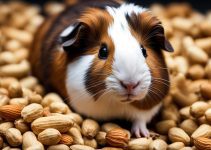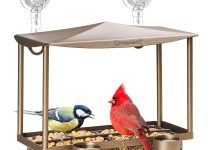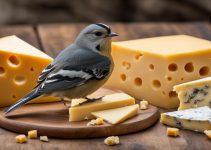As a pet lover, I know how important it is to provide the best care for our beloved animals. When it comes to tortoises, ensuring they have a balanced and nutritious diet is crucial for their health and well-being. But what exactly do tortoises eat? Let’s explore the fascinating world of tortoise nutrition and discover the best food options for these amazing creatures.
What Do Tortoises Eat?
- Tortoises have different nutritional requirements based on their species and natural habitat.
- Understanding the natural diet of tortoises helps in providing a suitable captive diet.
- Feeding a tortoise requires replicating their natural diet as closely as possible.
- A varied diet of safe vegetables and fruits is essential for a tortoise’s overall health.
- Following general feeding guidelines and monitoring their weight and health ensures tortoises receive the necessary nutrients.
What Do Tortoises Eat in the Wild?
The diets of tortoises in the wild vary depending on their species and natural habitat. Understanding their natural diets is crucial in providing a suitable diet for captive tortoises.
Mediterranean tortoises, such as Hermann’s tortoises and Russian tortoises, graze on shrubs and succulents. These plants provide the necessary nutrients and hydration for their survival.
Tropical tortoises, like the red-footed tortoise, have a wider variety of fruits and plants in their diet. They consume fruits, flowers, and a range of vegetation found in their tropical habitats.
Arid climate tortoises, such as the sulcata tortoise, primarily eat grasses, leaves, and stems. These tortoises have adapted to survive in dry environments where there is limited vegetation available.
By understanding the natural diet of tortoises in the wild, we can replicate it as closely as possible in captivity. This ensures that captive tortoises receive the necessary nutrients and live a healthy life.
Feeding Your Tortoise
Feeding tortoises in captivity is all about providing them with a diet that closely resembles what they would eat in their natural habitat. As a responsible tortoise owner, it’s crucial to understand the nutritional needs of your pet and ensure they receive a balanced diet.
Researchers have conducted studies on the feeding habits of wild tortoises to determine their specific dietary requirements. By replicating their natural diet, we can help promote their overall health and well-being in captivity.
When it comes to feeding your tortoise, there are a few key considerations. First and foremost, it is essential to provide a balance of nutrients, minerals, and hydration in their diet. Including a variety of store-bought vegetables, fruits, and plants from your garden can help achieve this balance.
Each species of tortoise has its own unique dietary needs. It’s important to do thorough research on the specific requirements of your tortoise species and tailor their diet accordingly. This may involve consulting with experts or veterinarians who specialize in reptile care.
Remember, a healthy diet for your tortoise should consist of a combination of foods that mimic their natural diet. By providing a diverse selection of vegetables, fruits, and plants, you can ensure they receive the necessary nutrients to thrive in captivity.
Feeding your tortoise requires careful attention and consideration. By following a tortoise feeding guide and understanding their captive diet, you can contribute to their long-term health and happiness.
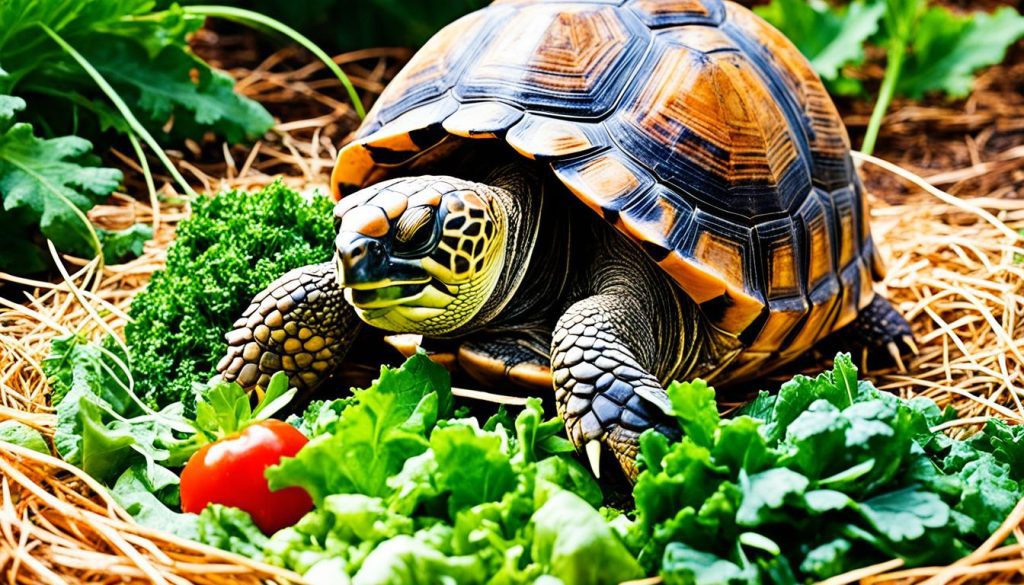
Ensuring your tortoise receives the appropriate diet is essential for their overall health and well-being. replicate their natural diet as closely as possible in captivity. By providing a balanced and varied diet, you can help maintain their optimal health and longevity.
What Can a Tortoise Eat?
When it comes to the diet of a tortoise, it’s important to consider the specific requirements of their species. Different tortoises have different food preferences and nutritional needs. Here are some examples of safe foods for tortoises:
- Russian Tortoises: Dandelions, chickweed, kale, and various greens are suitable for Russian Tortoises.
- Hermann’s Tortoises: Grass, weeds, cacti, and certain vegetables can be included in the diet of Hermann’s Tortoises.
- Sulcata Tortoises: Dark leafy greens, alfalfa, grasses, and occasional fruits are beneficial for Sulcata Tortoises.
- Red-footed Tortoises: Greens, vegetables, fruits, and protein-rich foods are essential for the diet of Red-footed Tortoises.
- Leopard Tortoises: Grass hay, broadleaf weeds, and vegetables form the diet of Leopard Tortoises.
Providing a varied and balanced diet is crucial for a tortoise’s overall health and well-being. Including safe vegetables and fruits in their diet helps meet their nutritional requirements. Remember to research the specific dietary needs of your tortoise’s species and consult with a veterinarian for personalized advice.
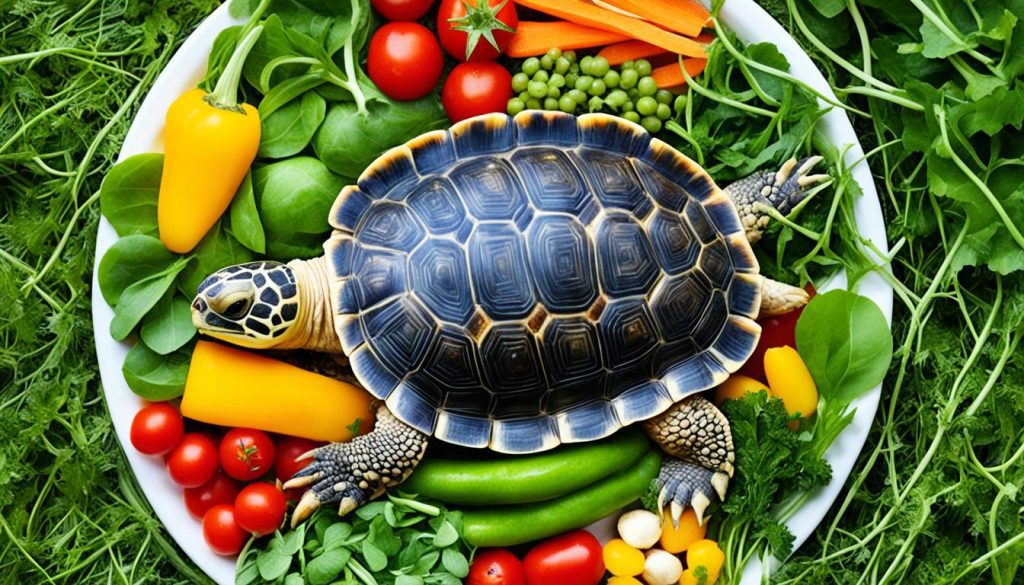
General Rules for Feeding Tortoises
Feeding tortoises requires adhering to some essential guidelines to ensure their health and well-being. Here are some tips and tricks for feeding your pet tortoise:
- Buy vegetables and plants that are grown without chemicals to avoid any potential harm to your tortoise’s health.
- If you’re uncertain about the identification of a particular plant, it’s best to consult a specialist or avoid feeding it to your tortoise altogether.
- Commercially grown fruits should be given in moderation due to their higher sugar content, as excessive sugar intake may cause health issues for your tortoise.
- Offer a variety of plants and vegetables to mimic your tortoise’s natural diet. This variety ensures they receive a balance of nutrients and minerals.
- Considerations for shell growth and beak management should also be taken into account. Provide the necessary calcium sources for shell development and offer suitable items for beak wear.
- Hydration is crucial for tortoises, so ensure they have access to clean, fresh water at all times.
- Remove any uneaten food daily to prevent spoilage and potential health issues. Fresh food should be provided the next day to maintain a consistent feeding schedule.
By following these feeding guidelines, you can provide your tortoise with a well-rounded diet and contribute to their overall health and happiness.
Conclusion
Providing a proper diet for tortoises is crucial for their overall health and well-being. By understanding the natural diets of different tortoise species, we can replicate those diets in captivity, ensuring that our tortoises receive the nutrients they need. A balanced diet for tortoises consists of a combination of vegetables, fruits, and protein-rich foods.
Following general feeding guidelines is essential to keep your tortoise healthy and happy. Monitoring their weight and overall health helps ensure they are getting the necessary nutrients. Remember to research the specific dietary needs of your tortoise species to provide the best possible diet. And if you ever have any doubts or concerns, don’t hesitate to consult with a veterinarian for expert advice.
Providing a varied and balanced diet, following feeding guidelines, and monitoring your tortoise’s health are key to their well-being. With the right nutrition, your tortoise can thrive and live a long, healthy life by your side.

